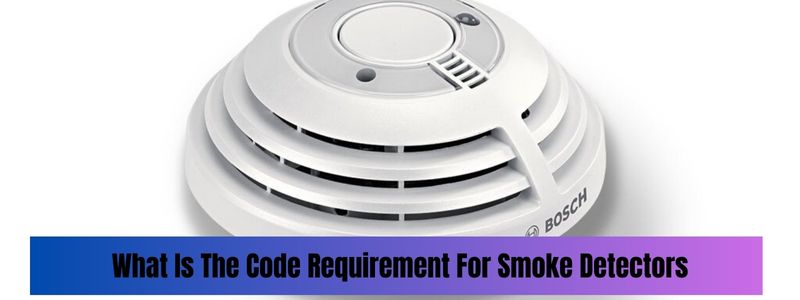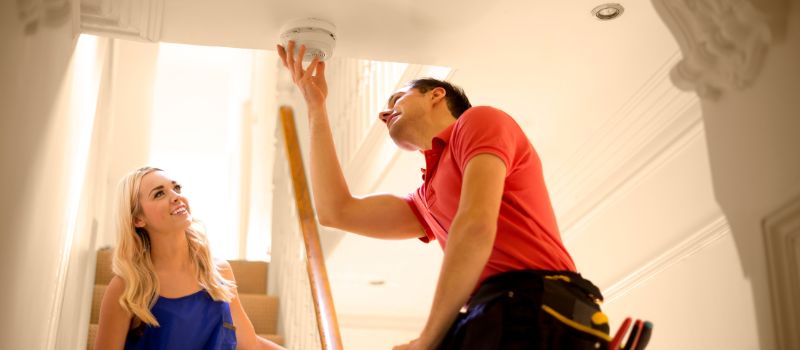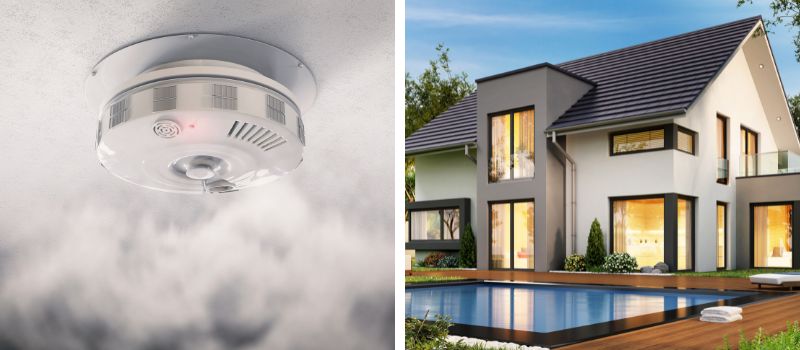Carbon monoxide (CO) is a colorless, odorless, and tasteless gas that, if ingested in sufficient quantities, has the potential to cause death. The incomplete combustion of substances like wood, gas, and oil results in the production of this gas as a byproduct.
When the amounts of CO in the air reach dangerously high levels, it can cause people to experience a variety of symptoms, including headaches, dizziness, nausea, and even death. Installing a carbon monoxide alarm in your house is absolutely necessary in order to keep your loved ones safe from the adverse effects of carbon monoxide exposure.
However, it is of the utmost importance to be familiar with the sound that the carbon monoxide alert makes. in order for you to identify the caution signs and take the appropriate actions moving forward.
What Does Carbon Monoxide Alarm Sound Like?
Carbon monoxide alarms are engineered to identify the presence of carbon monoxide (CO) in the air and to sound a piercing, audible alarm when CO concentrations reach potentially hazardous levels.
The alarm tone is typically comprised of four beeps or a continuous sound that is intense enough to jolt you awake from your slumber. There is a possibility that the sound will change depending not only on the model of the alert but also the manufacturer.
The Different Sounds That Carbon Monoxide Alarms Make
There are two different noises that can come from a carbon monoxide alert; the first is a continuous beep, and the second is a series of beeps. The amount of CO that is found in the air determines the sort of sound that is produced. The following is a rundown of each sound in its entirety:
Continuous Beep If you hear a beep that does not stop, it means that an unsafe amount of carbon monoxide has been detected in the air and that you should leave the building as soon as possible. This sound is typically very loud and it remains continuous. Its purpose is to rouse you from your sleep.
A series of beeps indicates that a low level of carbon monoxide has been identified in the air and that you need to take action to reduce the levels of CO in the air. The beeps will continue until you take the necessary steps to lower the levels of CO in the air. This sound might come and go, and if you’re trying to listen to it while you’re sleeping or in a busy place, you might have trouble hearing it.
Recognizing the Alarm Sound How to Recognize the Alarm Sound
It is critical to be able to identify the sound of a carbon monoxide alarm in order to be able to move promptly in response to its activation. The following are some pointers on how to identify the sound of the alarm:
Be on the lookout for a loud beep that is continuous or a succession of beeps.
Examine the alert to see if it has any blinking lights; these may appear in conjunction with the sound.
Find out what the alert sounds like by consulting the user manual that came with your particular model.
What to Do When the Alarm Sounds
If you hear the sound of a carbon monoxide alarm, it is imperative that you move immediately. The following are some procedures that should be followed:
- If you hear a beeping sound that won’t stop, you need to leave the building immediately.
- If you hear a series of beeps, make sure the room has adequate ventilation by opening the windows and doors.
- Seek immediate medical assistance if you are experiencing symptoms of carbon monoxide poisoning, including headaches, dizziness, or nausea. Carbon monoxide poisoning can be fatal.
- To report the occurrence, dial the number for the fire department or emergency services in your area.
Questions That Are Typically Asked
What causes carbon monoxide alarms to go off?
Carbon monoxide alarms may sound for a number of reasons, including faulty appliances, obstructed chimneys or vents, and elevated amounts of CO in the surrounding air.
How often should I test my carbon monoxide alarm?
If you want to make sure that your carbon monoxide detector is working properly, it is advised that you check it once every month.
How long do carbon monoxide alarms last?
The average lifespan of a carbon monoxide detector is between five and seven years. If you want more information about when you should replace your carbon monoxide detector, check the user manual that came with the particular model that you have.
Can carbon monoxide alarms be silenced?
You can turn off the majority of carbon monoxide alarms by pressing a button located on the alert itself. Nevertheless, it is absolutely necessary to take immediate action in order to resolve the CO’s source.
The Final Thoughts
In conclusion, if you want to keep your house and your family safe from the effects of carbon monoxide, it is imperative that you are familiar with the sound that a carbon monoxide alarm makes. Alarms for carbon monoxide can identify dangerously high concentrations of the gas in the air and sound a piercing, audible alarm to draw attention to the potential threat.
You can protect your loved ones from the dangers of carbon monoxide poisoning and keep yourself and your loved ones secure by learning to identify the sound of the alarm and taking immediate action. Make sure to replace your carbon monoxide alarm when it gets close to the end of its useful life and remember to test it on a frequent basis. Stay safe!
Read more:
- Why Did My Smoke Alarm Go Off for 5 Seconds?
- Do Smoke Detectors Go Off For Carbon Monoxide?
- What Can Set Off A Smoke Detector Besides Smoke?

Edward’s expertise in smoke detectors is particularly noteworthy. He has conducted extensive research on the latest advancements in smoke detector technology and has worked closely with manufacturers to develop cutting-edge products that can detect fires more accurately and quickly.




